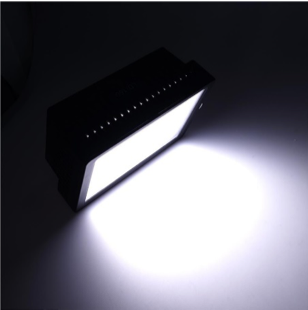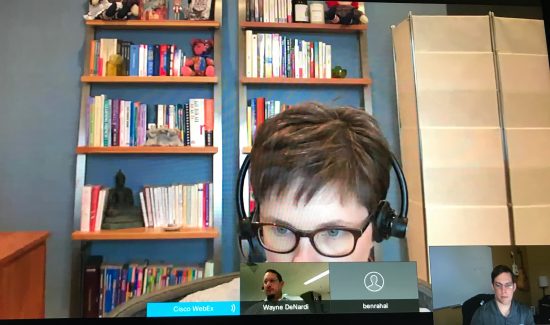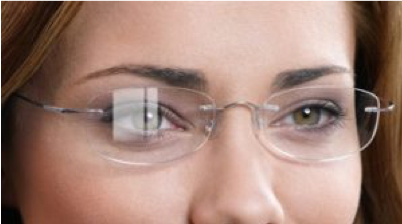John Welsh is a Cisco Champion, an elite group of technical experts who are passionate about IT and enjoy sharing their knowledge, expertise, and thoughts across the social web and with Cisco. The program has been running for over five years and has earned two industry awards as an industry best practice. Learn more about the program at http://cs.co/ciscochampion.
=============================================
For many years I have helped organizations that are thinking about deploying video get to the point where people are using video in their environment every day. Inevitably there are users that say things like, “I don’t want to do video, I always look terrible on video.” To which I say, “Are you sure it’s the video?”. After they give me an offended look for a moment I assure them that I was only joking and that the truth of the matter may not be something they had considered: Most people can “make themselves look better” on video just by following one or two of the guidelines mentioned below.
Lighting, Lighting, and More Lighting!
 If you’ve ever seen a TV or movie set, one of the first things you will notice is the massive number of lights that they have pointing at the on-screen people. Proper lighting is extremely important to making you look better on camera.
If you’ve ever seen a TV or movie set, one of the first things you will notice is the massive number of lights that they have pointing at the on-screen people. Proper lighting is extremely important to making you look better on camera.
Think about it this way: on those film sets they have these cameras with large lenses that can collect a lot of light and they are still using lights to create the scene. If you’re attending a WebEx meeting and trying to do video through your little pinhole laptop camera, lighting is going to have an even larger effect. I’m sure you have been on WebEx sessions where participants were on video and they looked like they were in some dank cave and their video was all grainy. That’s because the ambient light in their room wasn’t great and they didn’t do anything to add light to it.
The solution could be something as simple as turning on more existing lights in the room to getting video lighting. If you do a quick search for laptop video lighting you will see a lot of solutions that will either clip onto the laptop or sit on a tripod behind your screen and shine on your face and get you looking better in no time.
Look at Your Surroundings
If you have time to do so before you get on video, it’s probably best to take an assessment of your surroundings and determine if it will work well for your video session. Some things to look for:
- Is there a wide open-window behind you? If so, the light from the window can counter any other lighting you did and still make your face look like it’s in a dark hole. Obviously you can’t move the window, but if you can change the position of your video endpoint or lower your blinds that would help. A word about blinds though, if you lower them make sure to close them all the way. Having mini-blinds that are lowered but open can create a weird vertigo-like effect on the screen of the people you are talking with.
- Is there a massive mess behind you? Sure, we all have occasions where the mess in the office gets away from us, but having that behind you can be distracting and have people paying more attention to what’s behind you rather than you and what you have to say.
- If you have a whiteboard behind you, what’s written on it? This has less to do with how you personally look on video, but you want to make sure that if there is a whiteboard behind you that you don’t have data that you wouldn’t want the person you’re conversing with to see.
Be Mindful of Camera Positioning

Most video endpoints and video conferencing solutions are good about giving you a way to see what your camera view is. USE IT! Make sure that if you intend to be on camera that you are actually on camera. Also understand, that with certain video conferences, whether through WebEx or something else, there may be a filmstrip of the other participants on the bottom. If you don’t account for that, you could end up with only half of your face showing, like this:
Just keep an eye out for what you look like on camera (you can see my self-view at the bottom right of the same image) and adjust it as necessary.
Be Aware of What You’re Wearing
 This section deals with a couple of things that I have seen. I’ve been on several video calls where the person on the other end wouldn’t turn on their camera because they said they “weren’t video ready”. If you are working for an organization that heavily uses video and it’s during work hours, there really shouldn’t be a time where you’re not video ready.
This section deals with a couple of things that I have seen. I’ve been on several video calls where the person on the other end wouldn’t turn on their camera because they said they “weren’t video ready”. If you are working for an organization that heavily uses video and it’s during work hours, there really shouldn’t be a time where you’re not video ready.
Sure, I’ve taken calls from the home office and been in a t-shirt, but I’ve still been on video because I know the customer and video participants and knew it wouldn’t be an issue. If there is a reason that you consider yourself not video ready frequently, then maybe keep a shirt that you feel comfortable wearing on video near your video endpoint or laptop so that you can make a quick change.
While it doesn’t happen a whole lot with modern video endpoints and the bandwidth that’s available, if you wear certain patterned shirts it can create a moire effect (similar to what happens with the mini-blinds discussed earlier). Wearing a striped shirt or a small check pattern can cause this. If you want to see the moire effect in action, check out this episode of Engineering Deathmatch at about 4:10 and set your quality to 480p.
It will jump out in no time. If you’re on a higher speed connection with quality endpoints on either end then this shouldn’t come up too much, but you can never guarantee when someone will be coming in on a bandwidth constrained connection and an overtaxed laptop that will make your awesome quality video downgrade to what they can handle.
Anti-Glare
 I’m going to round out this post with something that helps but definitely isn’t 100% necessary. In fact, I don’t even do this one myself, though I probably should. If you’re joining a video conference from your laptop and you wear glasses, there’s a good chance that your glasses will pick up some glare from the screen. That is, unless you have some sort of anti-glare coating on your glasses. This helps with your appearance on screen and also might help prevent people from seeing what you’re doing on your laptop if the glare is extreme enough and the video quality is good.
I’m going to round out this post with something that helps but definitely isn’t 100% necessary. In fact, I don’t even do this one myself, though I probably should. If you’re joining a video conference from your laptop and you wear glasses, there’s a good chance that your glasses will pick up some glare from the screen. That is, unless you have some sort of anti-glare coating on your glasses. This helps with your appearance on screen and also might help prevent people from seeing what you’re doing on your laptop if the glare is extreme enough and the video quality is good.
To wrap up, if you’re concerned that you don’t look good on video, chances are that it’s probably not you that is the problem. If you follow just one or two of these guidelines it can help make you look, and feel better when participating in a video call.
How about you? Do you have any tips for making video a better experience?

Great suggestions about lighting. I’m glad I splurged and got the anti-glare coating for my glasses!
that is very important as youtuber.. i think cisco can help us better…
for my channel: https://www.youtube.com/channel/UCWpjKixKMb_oEx7rLDZ9okA